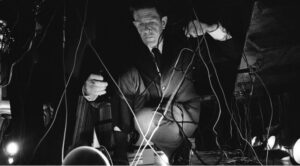The countertenor speaks about his career path and making his Detroit Opera debut in the high-flying title role of Handel’s Xerxes.

Key’mon Murrah in a music rehearsal at the Detroit Opera House.
Austin Richey / Detroit Opera
How did you get started in music?
I first started singing in my church. Our mother sings gospel, so we’ve always had music around us. She taught me and my twin brother, Kay’mon, how to sing. I was going to go the gospel route, until I got into the Youth Performing Arts School. I fell in love with opera at the Governor’s School for the Arts, a magnet high school in Louisville, Kentucky. At the Governor’s School, I met Alexander T. Simpson—I call him my music “father”, he poured so much into my brother and me. He prepared us to go to college, and because of him we both got a full scholarship to the University of Kentucky.
Early on, you considered a career as a tenor. Why did you decide to make the switch to countertenor?
I was singing as a boy soprano from age nine to 18 in a boys’ choir. I only switched to tenor because I thought that’s what you had to do. I didn’t see other people like me being a countertenor, so when I finally decided to try, it was more like a dare to myself. I was out of school and still taking voice lessons—I think I could have had a career as a tenor, but my heart wasn’t in it. I saw that a small opera company was doing Giulio Cesare. I learned a couple of arias and thought, “if it works, it works, and if it doesn’t, I’ll move on.” So, I recorded my arias and sent them to the opera company. I got my first role as a countertenor, as Tolomeo in that Giulio Cesare. I got some good feedback, and from then on, I have been working professionally as a countertenor.
How is the countertenor sound created?
There is a big misunderstanding about how countertenors make sound. I don’t feel it’s that different from a woman singing: We’re singing in our head voice, just like women!

Key’mon Murrah.
Jeremy Kramer
Ornamentation is common in modern music as well as Baroque music. Is there a connection?
I come from a gospel background, and early music is just like gospel. You sing the first phrase as written, and then go back and make it your own, just like in Baroque operas. So, if I’m singing a Baroque opera aria, I will sing it very simple, and then I’ll sing it with embellishments—it could be a lot or a little, or just a dynamic change. It’s all about making it your own, putting your own soul into it, similar to pop music. Baroque music is very spiritual—being able to put your own soul, your own life into the music, it’s the same as gospel.
In Xerxes, almost immediately when you come on stage you are singing “Ombra mai fu,” one of Handel’s most popular, familiar tunes.
I’ve been singing “Ombra mai fu” since the beginning of my career, so it’s very well in my body. It’s the aria that I’m most excited to sing.

Key’mon Murrah in rehearsal as Xerxes at Detroit Opera House.
Austin Richey / Detroit Opera
Tell us about some of the dramatic challenges of taking up the role of Xerxes.
Xerxes is a character who is very hot and cold—he can be mad one second and loving the next, which is also kind of comedic. I love the arias, but learning his mental state is what intrigues me.
Do you come across misconceptions around your voice and the type of roles you play?
There are a lot—some negative and some positive. The most frequent one I hear that I’m trying to break away from is that countertenors can only do early music. I believe we are capable of doing more Romantic music, new music, Classical music—we can do as much as we want, and we shouldn’t stay in that box if we don’t want to. I can do roles which are traditionally female or traditionally male, so I can play around a little bit more, and I think that’s exciting and fun.
Anything you’d like to say about making your Detroit Opera debut?
I’m excited to be here. I look back at my favorite singers who grew up in Detroit and worked here, like George Shirley—I’ve always wanted to follow in his footsteps. The show is going to be super fun. The whole cast is at the top of their game. It’s going to be a wonderful time!

Key’mon Murrah.
Jeremy Kramer






